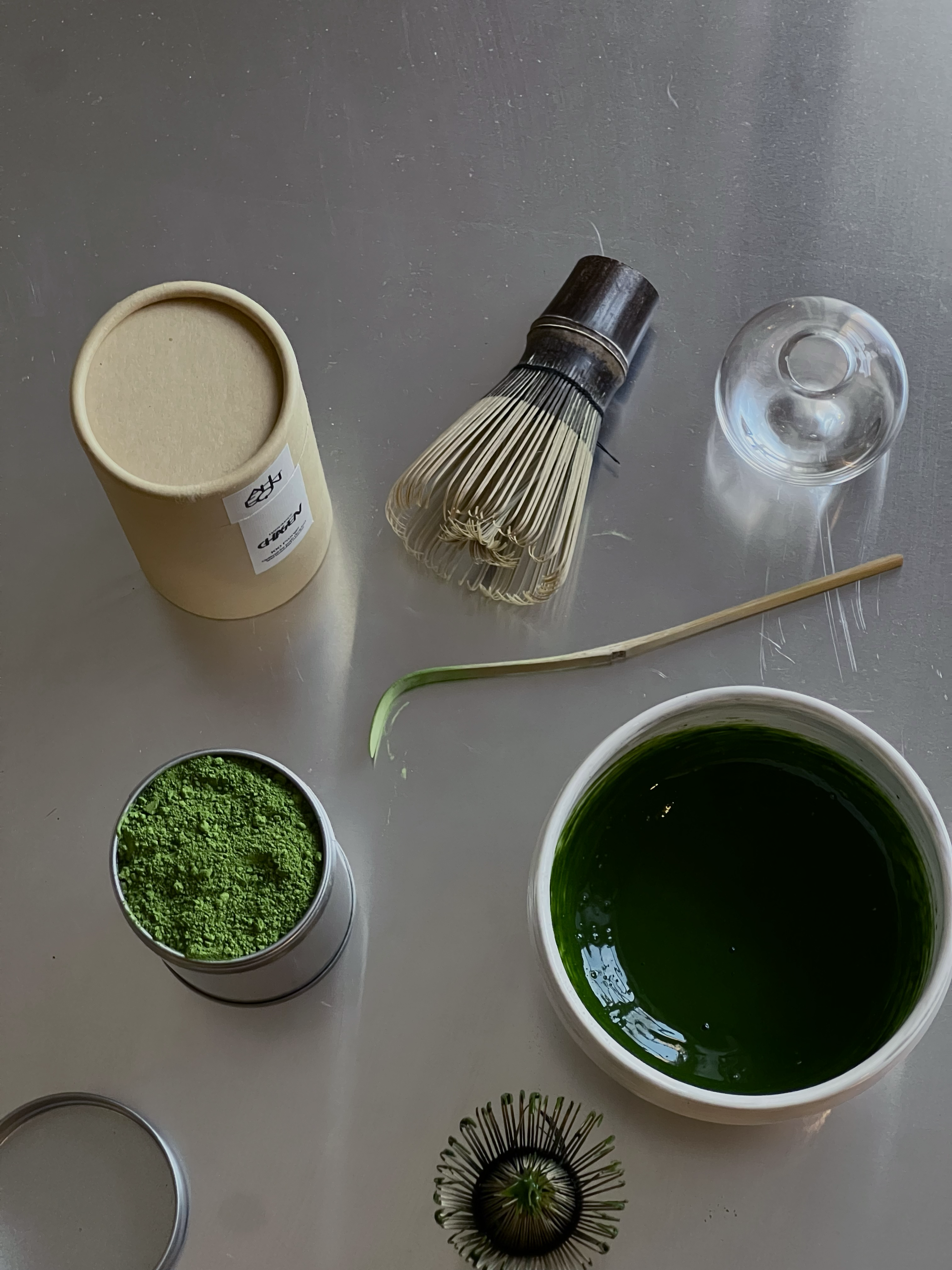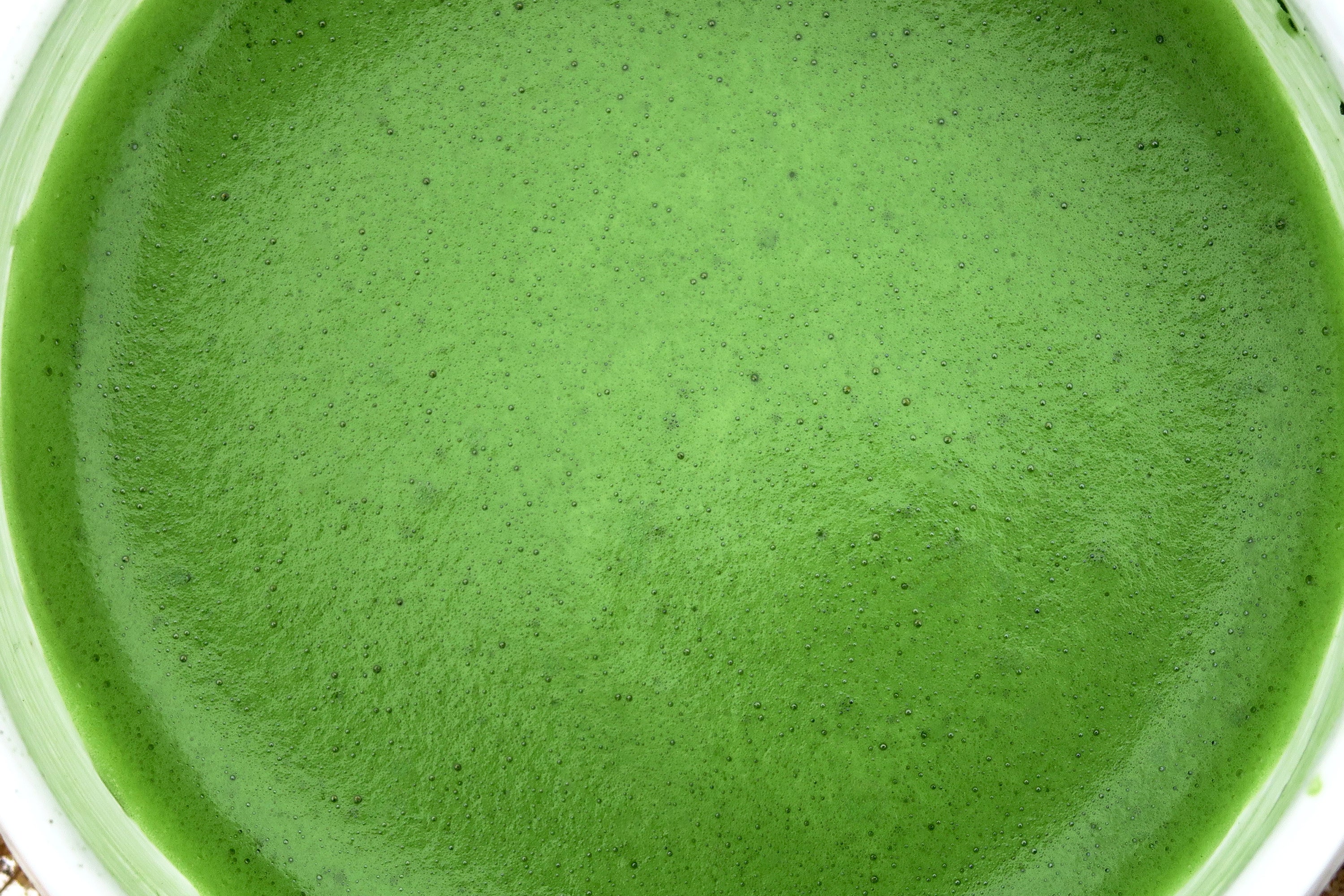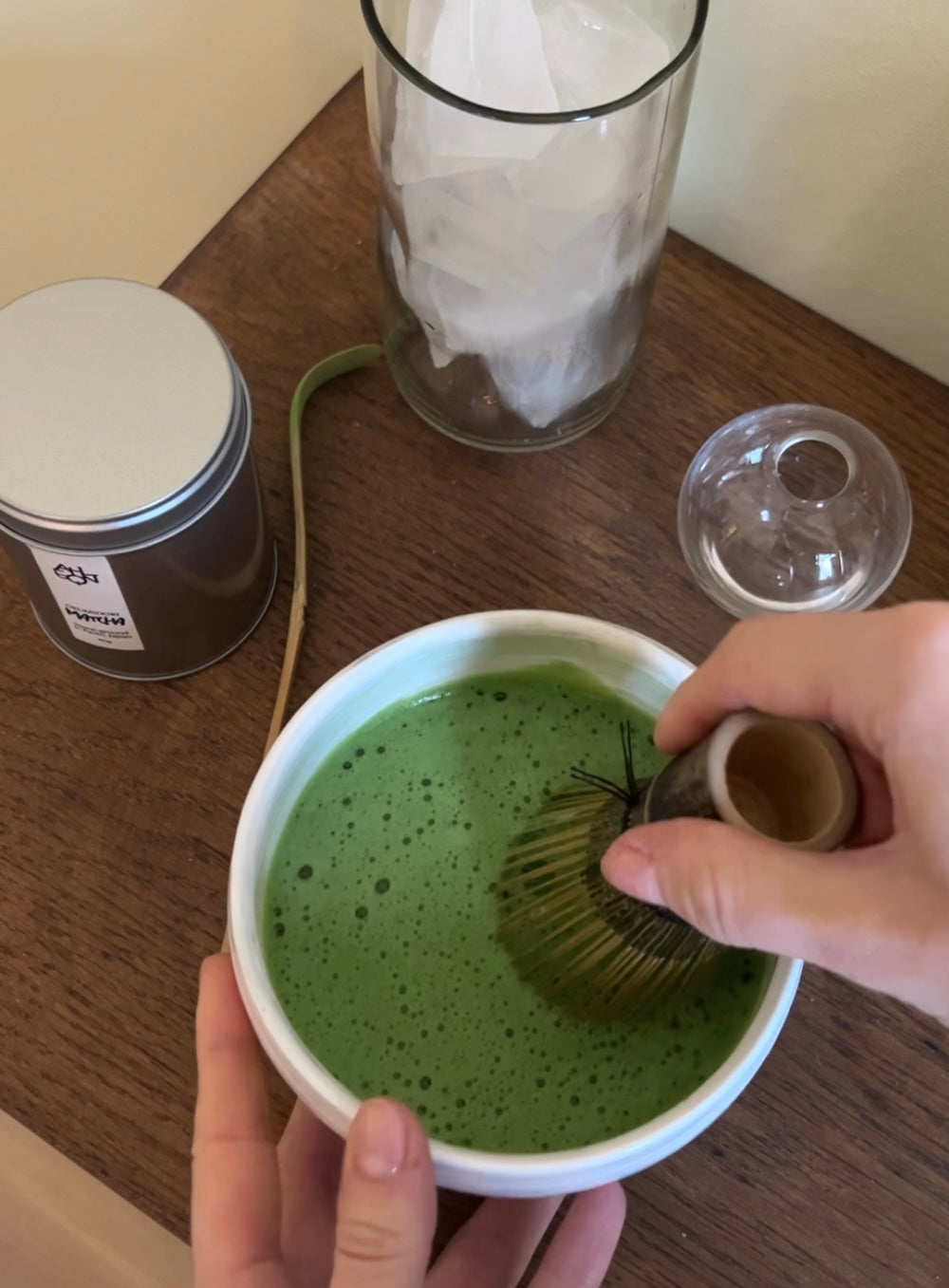
Beginner’s Guide – How to Prepare Your Matcha
A Beginner’s Guide to Matcha
An introduction to the ritual, the tools, and the technique
If you’ve recently discovered matcha, you’ve opened the door to a centuries-old tradition—one rooted in simplicity, intention, and presence. This vibrant green tea powder offers more than antioxidants and nutrients. It’s known for delivering a calm, focused energy that’s deeply different from coffee. But for the uninitiated, preparing matcha can feel unfamiliar. This guide walks you through the essentials, so you can prepare your first cup with clarity and confidence.
What is Matcha?
Matcha is a finely milled green tea made from shade-grown tea leaves, traditionally cultivated and processed in Japan. Unlike steeped teas, matcha is consumed whole. You’re drinking the entire leaf, which is why the quality of the tea—and the way it’s prepared—matters.
The process begins in the fields. The tea plants are shaded weeks before harvest to increase chlorophyll and L-theanine. After harvesting, the leaves are steamed, dried, and slowly stone-ground into a fine, bright green powder. The result is a tea that’s rich in taste, nutrients, and ceremony.
What You’ll Need
You don’t need a full tea ceremony to begin. While traditional tools enhance the experience, simple kitchen items can work just as well.
Traditional Tools
-
Chawan (matcha bowl): A wide bowl that allows for proper whisking.
-
Chasen (bamboo whisk): Designed to mix the powder thoroughly and create a frothy layer.
-
Chashaku (bamboo scoop): Used to measure the correct amount of matcha.
-
Furui (sifter): Removes clumps for a smooth, even consistency.
Alternatives
-
A small bowl or wide mug
-
A fine-mesh sieve or tea strainer
-
A teaspoon
-
A handheld milk frother (if you don’t have a chasen)
How to Prepare Usucha (Thin Matcha)
The most approachable way to enjoy matcha, perfect for daily use.
1. Sift the Matcha
Place 1 to 2 grams (roughly 1 teaspoon) of matcha into your bowl using a sifter. This breaks up any clumps and creates a smooth, airy powder. If you're not using a sifter, gently whisk the dry powder with your chasen to loosen it before adding water.
2. Heat the Water
Boil fresh water and let it cool for a few minutes. The ideal temperature is around 80°C. Water that’s too hot can scorch the tea, bringing out bitterness and flattening its flavor.
3. Make a Paste
Add a small amount of hot water—just enough to blend with the matcha. Use your whisk to create a thick paste. This helps prevent clumping and sets the base for a smooth drink.
4. Whisk and Froth
Add about 70–100 ml of hot water to the paste. Hold the whisk upright and whisk briskly in a zigzag motion (an "M" or "W" shape) until a layer of froth forms on the surface. This aerates the tea and releases its full aroma. If you’re using a frother, pulse until a fine layer of bubbles appears.
5. Enjoy
Matcha is traditionally enjoyed straight from the bowl, sipped slowly and with attention. Of course, you can also pour it into a cup or glass—whatever suits your ritual.
Adjusting the Flavor
Matcha can be an acquired taste. If your first cup feels too strong or bitter, try the following:
-
Use less matcha powder. Start with half a teaspoon and increase as you get used to the flavor.
-
Let the water cool slightly longer. Even 5°C can make a noticeable difference.
-
Add milk. Oat milk is a popular choice for its natural sweetness and smooth texture. This makes for an easy introduction.
Making a Matcha Latte
If you prefer a creamier drink, begin by preparing your matcha base as described above. Then add your milk of choice—warm and frothed if possible. For a gentle sweetness, a few drops of maple syrup or a touch of vanilla extract work well. The result is a comforting, balanced drink that still offers matcha’s calm energy.
Iced Matcha Latte Variation
Follow the same preparation for the matcha base, then pour it over a glass filled with ice. Add cold milk and stir gently. Ideal for warmer days or as a refreshing afternoon reset.
Storing Matcha Properly
Matcha is sensitive to air, light, and heat. Always store it in an airtight container, preferably in the refrigerator once opened. Use it within two to three months to enjoy its full depth of flavor and nutrients.
Final Thoughts
Preparing matcha doesn’t need to be ceremonial or perfect—it simply needs to be intentional. Whether you whisk it traditionally or froth it into a latte, the beauty of matcha lies in the ritual of slowing down. With time and practice, you’ll find your rhythm, your favorite tools, and the preparation style that feels most like you.
Let each cup mark a quiet return—to presence, to clarity, and to yourself.















